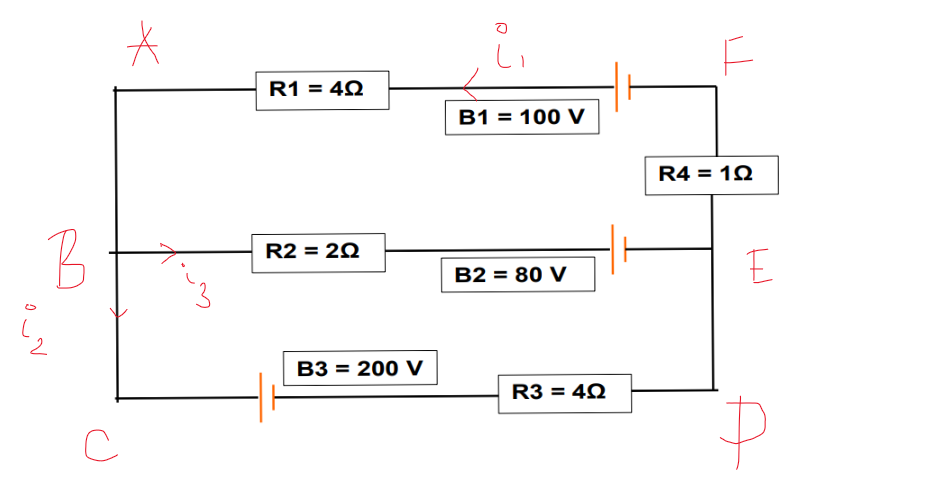$\text{We were doing problems on Kirchoff's Laws in my class. The problem :}$
My Professor told that from $B_1$ current $i_1$ is flowing which splits into $i_2,i_3⇒i_1=i_2+i_3$. Then he used Kirchoff's Laws in loops to get $i_1,i_2,i_3.$ But why did taking only $1$ current ie from $B_1$ worked? Similarly shouldn't other currents flow from $B_2,B_3$? Can someone explain?

